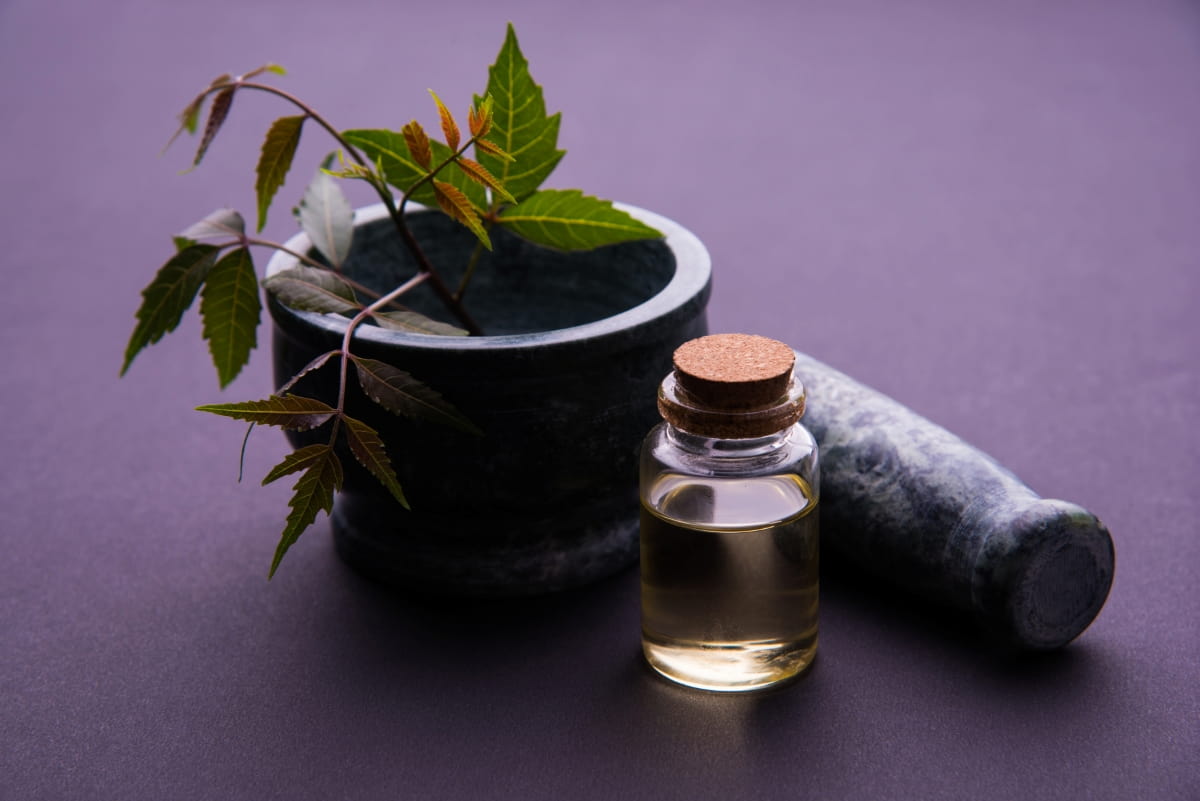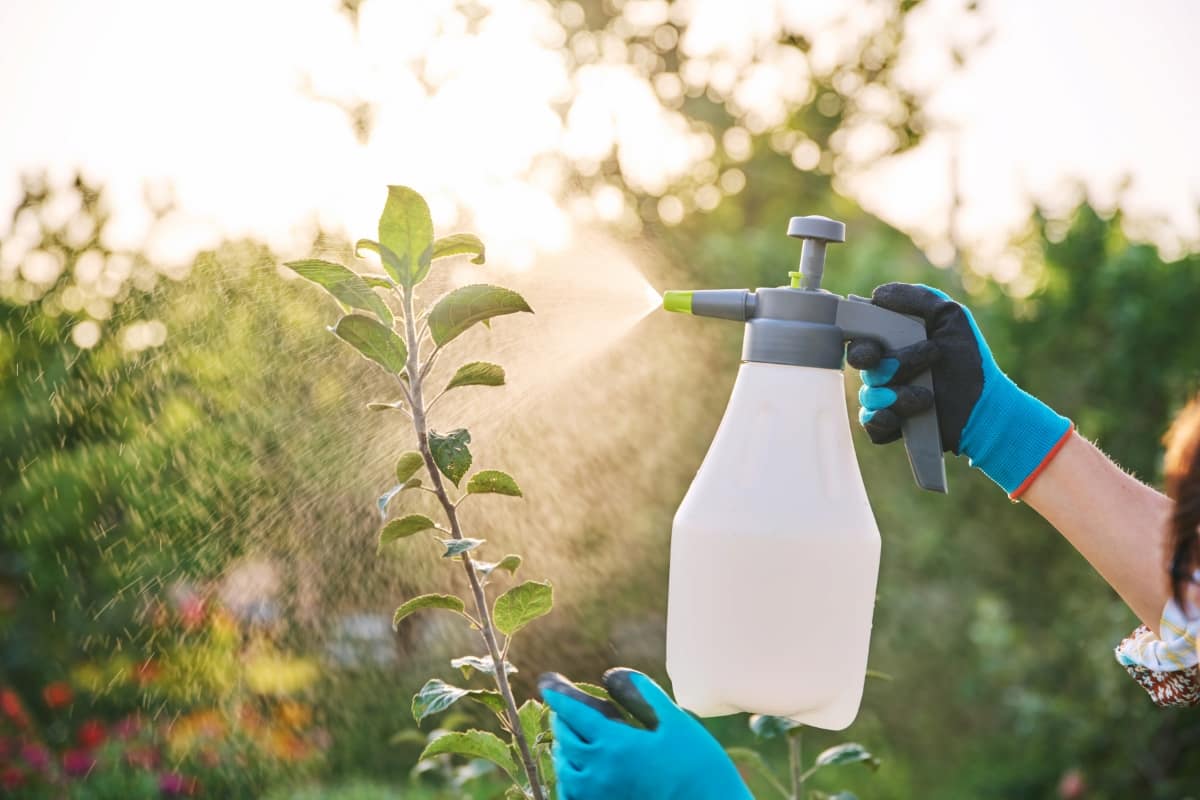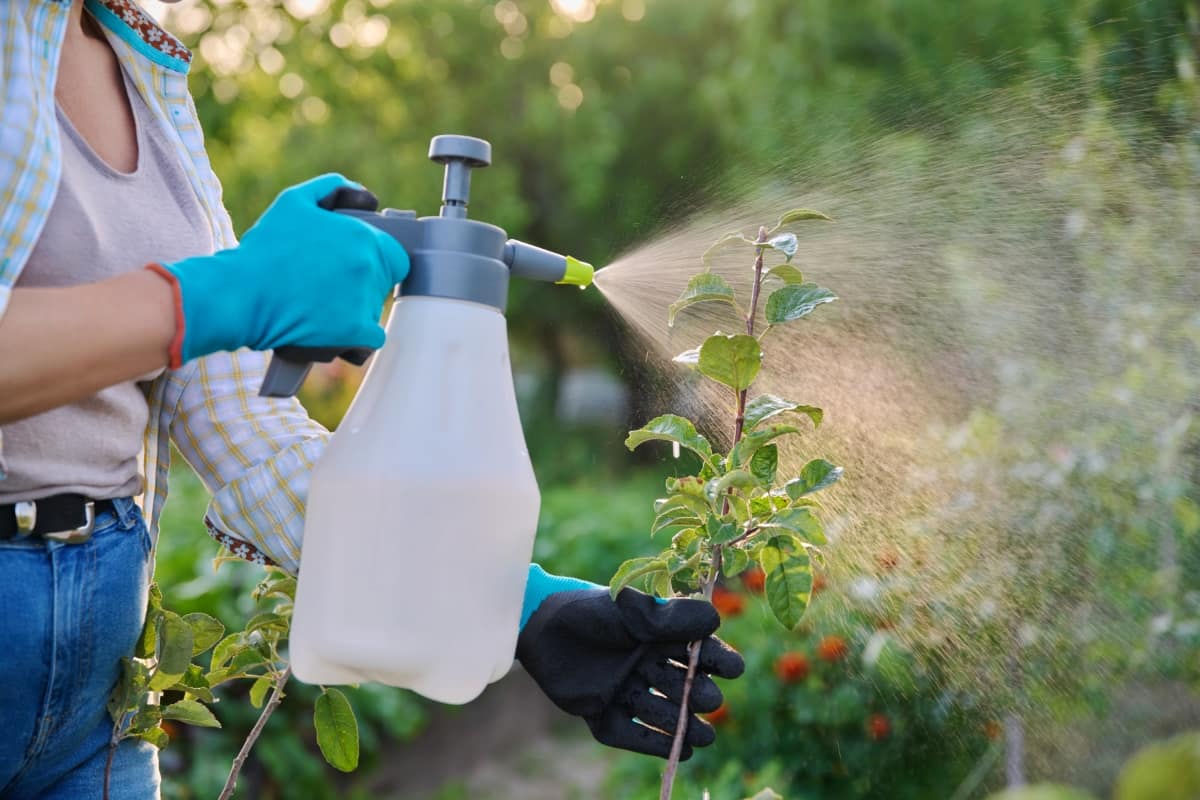Neem oil, extracted from the neem tree’s seeds (Azadirachta indica), is a natural and eco-friendly solution for controlling thrips infestations on plants. Thrips are small insects that suck plant sap, causing damage to leaves and affecting overall plant health. It has gained popularity as an organic alternative to synthetic pesticides due to its potent insecticidal properties and minimal environmental impact. In this guide, we explore the benefits of neem oil for thrips control and provide insights into preparing and applying this natural remedy to safeguard your plants.

Neem Oil Application for Thrips Control
Neem Oil and its Benefits for Thrips
Neem oil is renowned for its diverse range of biologically active compounds that exhibit powerful insecticidal, antifungal, and antibacterial properties. When applied to plants, neem oil disrupts thrips’ life cycle by inhibiting feeding, growth, and reproduction. The active ingredient, azadirachtin, acts as a natural insect growth regulator, impeding thrips’ ability to molt and develop into mature adults.
Moreover, neem oil acts as a repellent, deterring thrips from settling on plants. In addition to its direct impact on thrips, neem oil enhances plant resilience by boosting the immune system. This results in stronger, healthier plants better equipped to withstand thrips and other pests. Unlike chemical pesticides, neem oil poses minimal risk to beneficial insects, making it a sustainable choice for integrated pest management in gardens and agricultural settings.
How to Prepare Neem Oil to Use on Thrips
To effectively use neem oil against thrips, prepare a solution by diluting pure neem oil with water and an emulsifier (such as mild soap) to aid in dispersion. Begin by mixing one or two teaspoons of neem oil with one liter of water. Add a small amount (a few drops) of mild liquid soap and stir gently. It is crucial to use a pure, cold-pressed neem oil for optimal effectiveness. Once the solution is prepared, transfer it to a spray bottle.
How to Apply Neem Oil on Thrips
- Transfer the neem oil solution to a spray bottle for easy and uniform application.
- Before applying, ensure that your plants are well-watered. This helps reduce stress on the plants and improves neem oil absorption.
- Begin spraying the solution on the affected plants, covering all surfaces, including the tops and undersides of leaves. Thrips often hide on the undersides.
In case you missed it: How to Use Neem Oil on Tuberose Plants: A Natural Way to Get Rid of Bugs from Tuberose

- Pay extra attention to areas where thrips are most concentrated.
- Apply the neem oil solution early in the morning or late afternoon to avoid potential leaf burn in direct sunlight.
- Consistency is key for effective thrips control. Repeat the application every 7-14 days, based on the severity of the infestation.
- Continuous treatment disrupts the thrips’ life cycle and helps prevent re-infestation.
- Monitor your plants regularly, and reapply the neem oil solution if thrips reappear.
Can Neem Oil Be Used on All Money Plant Varieties?
Neem oil can generally be used on all varieties of Money Plants (Epipremnum aureum). Money Plants are hardy and adaptable, making them suitable for neem oil applications. Whether you have the common green variety or other cultivars, neem oil serves as a natural and safe solution for pest control.
It helps combat common pests like aphids, spider mites, and thrips, promoting the overall health of the plant. However, it’s always advisable to do a patch test, which means applying this neem oil on a small portion of the plant before widespread application to ensure compatibility and prevent potential adverse reactions.
How Long Does Neem Oil Stay Effective on Thrips?
Neem oil’s effectiveness against thrips can vary based on factors such as environmental conditions, application frequency, and the severity of the infestation. Typically, neem oil remains active for about 7 to 14 days after application. For optimal results, it’s crucial to maintain a consistent application schedule.
Reapply the neem oil solution at regular intervals to break the thrips’ life cycle and prevent their resurgence. If the infestation is severe, more frequent applications may be necessary. Monitoring your plants regularly for signs of thrips and adjusting the application frequency accordingly ensures sustained and effective thrips control using neem oil.
Using Neem Oil Along with Other Pest Control Methods
Enhance pest control effectiveness by combining neem oil with other integrated pest management strategies. Neem oil works synergistically with beneficial insects, like ladybugs and predatory mites, which help control thrips populations. Additionally, incorporating cultural practices such as proper sanitation, regular pruning, and maintaining plant health creates an unfavorable environment for thrips.
In case you missed it: How to Use Neem Oil on Nasturtium Plants: A Natural Way to Get Rid of Bugs from Nasturtiums

Rotation of insecticides with different modes of action can prevent thrips from developing resistance. Combining neem oil with these methods provides a comprehensive approach, promoting sustainable pest management and minimizing the risk of resistance development in thrips populations.
Some Common Pests and Diseases that Neem Oil Can Control on Thrips
Neem oil is particularly useful against thrips but also provides control for other common pests and diseases, such as aphids, spider mites, whiteflies, and scale insects. Neem oil’s pesticidal properties help disrupt the life cycles of these pests, reducing their populations and preventing further damage to plants. Moreover, neem oil exhibits antifungal properties, making it effective against diseases like powdery mildew and rust. Its broad-spectrum action makes neem oil a valuable tool for integrated pest management, promoting overall plant health.
How to Monitor the Effectiveness of Neem Oil on Thrips
Observe the treated plants for signs of reduced thrips activity, such as fewer damaged leaves and declining populations. Check both the upper and undersides of leaves where thrips often congregate. If thrips persist or reappear, consider increasing the frequency of neem oil applications. Healthy new growth and a decrease in visible damage are positive indicators of neem oil’s efficacy. Additionally, monitor for the presence of beneficial insects like ladybugs, which can thrive in a neem-treated environment and contribute to thrips control.
Safety Precautions to Take when Using Neem Oil on Thrips
- Protective Gear: Wear gloves, goggles, and long sleeves to avoid direct contact with neem oil, which may cause mild irritation to the skin and eyes.
- Ventilation: Apply neem oil in a well-ventilated area to reduce inhalation risks. Avoid using it on windy days to avoid drift.
- Test Compatibility: Perform a patch test on a small section of the plant before widespread application to ensure there are no adverse reactions.
- Pet and Wildlife Safety: Keep pets away during application and until the neem oil has dried. It is generally safe for beneficial insects, but exercise caution in sensitive ecosystems.
- Follow Instructions: Adhere to the recommended dilution ratios and application frequency specified on the neem oil product label for optimal results and safety.
In case you missed it: How to Use Neem Oil on Blanket Flower Plants: A Natural Way to Get Rid of Bugs from Blanket Flowers

Conclusion
Neem oil stands as a natural and effective solution for thrips control on plants, offering a sustainable alternative to synthetic pesticides. Its multifaceted benefits extend beyond thrips, addressing various pests and diseases while promoting overall plant health. With its eco-friendly profile and minimal impact on beneficial insects, neem oil represents a powerful ally in the pursuit of pest-free and thriving gardens.
- Feed Your Flock for Less: Top 10 Tips to Save on Chicken Feed
- Ultimate Guide to Ossabaw Island Hog: Breeding, Raising, Diet, and Care
- Hatching Answers: The Top 10 Reasons Your Chickens Aren’t Laying Eggs
- Eggs and Economics: Breaking Down the Cost of Raising Backyard Chickens
- Defend Your Greens: Proven Methods to Keep Iguanas Out of Your Garden
- Ultimate Guide to Cinnamon Queen Chicken: A Comprehensive Guide for Beginners
- Ultimate Guide to California Tan Chicken: Breeding, Raising, Diet, Egg-Production and Care
- Ultimate Guide to Marsh Daisy Chicken: Breeding, Raising, Diet, and Care
- 10 Types of Chicken Farming Businesses You Can Start for Profits